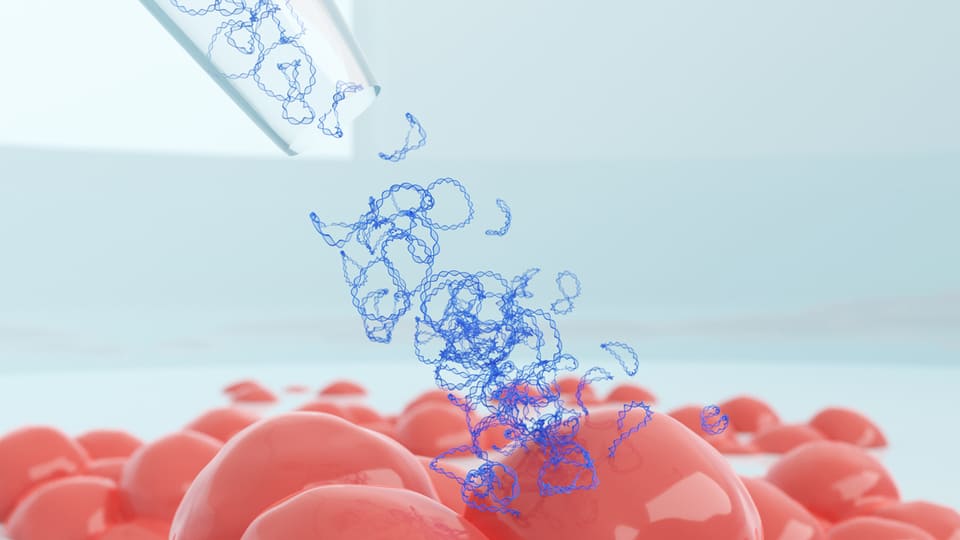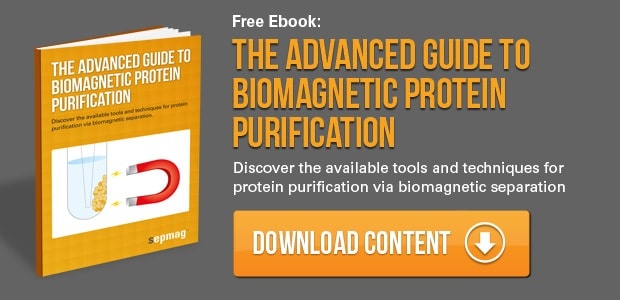Transfection is a technique that makes it possible to modify the genetic content and therefore gene expression of host eukaryotic cells, both in vivo and in vitro. This makes transfection an important tool for drug discovery, the CRISPR-Cas9 technique, studying cell biology, cellular functions and molecular mechanisms of disease. The process centers on inserting proteins, nanoparticles or nucleic acids (such as cDNA, mRNA) into the cytoplasm of cells.
What is the principle of transfection?
Transfection is a method that allows exogenic nucleic acids, nanoparticles and proteins to be inserted into cells. The purpose of transfection is often to produce recombinant proteins, or to overexpress or silence gene expression in transfected cells.
Due to their polyphosphate backbone, nucleic acids are negatively charged. During nucleic acid transfection, exogenous nucleic acids, such as plasmid DNA, RNA, and oligonucleotides, bypass the cell membrane to enter into cells.
Protein transfection can facilitate the regulation of cellular processes. The transfection of functional proteins into cells is therefore considered vital for addressing key challenges in medicine and biology. However, this potential is limited by low cellular uptake and susceptibility to degradation of transfected proteins. Recent advances in the methods by which transfection can be carried out have made the process simpler, and easier, with less specialist equipment training needed.
How is transfection carried out?
There are a variety of ways that transfection can be carried out.
Broadly, transfection protocols can be divided into those that are viral-based, non-viral-based, and hybrid techniques. Each transfection method presents a different solution for gaining entry through the cell surface membrane. Transfection methods include:
Mechanical transfection
Manual transfection techniques include electroporation, sonoporation, laser beam and microinjection. Microinjection directly transfers exogenic nucleotides or proteins into the target cell. However, this technique requires high levels of training to carry out, and is also time consuming, expensive and limited to low-throughput applications. Magnetic nanoparticles can also be used to directly control gene expression.
Chemical transfection
Chemical transfection is relatively easy to carry out, efficient, and has low cytotoxicity. It requires the use of a transfection reagent. Transfection reagents are generally either liposomal or non-lipid based reagents, such as polyethylenimine (PEI) e.g., PEI MAX®. Different reagents cater to specific applications. For example, jetPRIME® can be used for single stranded oligonucleotides, whereas PEIpro® can be used when manufacturing proteins.
Transfection reagents are positively charged, and so can form transfection complexes with negatively charged nucleic acids. These complexes protect the exogenic nucleic acids from being broken down by nucleases within the cell.
Polyethylenimine is widely used as a transfection reagent. It is a branched polymer with a high-density amine group. Each of its amino groups has a different structure, and therefore a different pKa value, which affects how easily each acid gives up its proton. This gives it the ability to act as a ‘proton sponge’, which involves capturing protons at different pH levels. As a result, PEI reagents, such as PEI MAX®, allow proteins to be delivered into cell lines. The process of chemical transfection follows these general steps:
- Encapsulation of genetic material with a transfection reagent
- Cellular uptake of complexes
- Release of complexes into the cytosol
- If required, transport of complexes into the nucleus for transcription e.g., for overexpression.
Magnetofection
Magnetic transfection, or magnetofection, is another transfection approach using metal-coated nanoparticles which can be coated in a reagent such as PEI MAX® to improve efficiency of transfection. For example, using PEI-functionalized beads for gene delivery was shown to enhance the binding affinity of plasmid DNA to the host cell, and facilitate extraction of high-purity DNA. Loaded beads can be recovered via magnetic separation and regenerated for reuse by exposure to an elution buffer.
Magnetic-based transfection approaches also have demonstrated reduced cytotoxicity, greater efficiency and successful transfection of difficult-to-transfect proteins for certain applications including gene therapy.
Find the right medium for your protocol
There is no universal transfection approach that is optimal and appropriate for all experimental aims and cell origins and types. Existing facilities, training, and budget are practical considerations that will influence the most appropriate choice, alongside required efficiency and risk of cytotoxicity. Reagent (e.g. PEI MAX®) functionalized magnetic beads are one solution offering high efficiency and transfection for difficult-to-transfect cell lines. And if you are creating high molecular weight DNA or proteins for use in transfection, magnetic separation offers the ability to extract high purity DNA and recombination proteins quickly, in one tube, with no centrifugation or hazardous chemicals. Find out more about magnetic separation in our guide to biomagnetic DNA purification.
Related news
- Limitations and perspectives of Chemiluminescent immunoassay (CLIA)
- Spin Column
- CLIA-label protein conjugation





